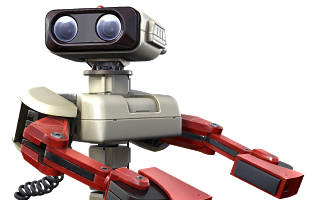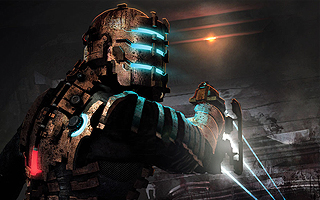Control Freak
Top 10 Weirdest Video Game Controllers of All Time!
A lot of attention is given to graphics and processing power, but a controller can make or break your gaming experience. The video game industry has been in a state of continual evolution since its infancy, and we’ve seen many revolutionary controllers over the years. Concepts like joysticks, d-pads, shoulder buttons, analog thumbsticks, force feedback, touch screens, and motion controls changed the way that games are played on a large scale. This doesn’t mean that every new idea is going to catch on, however. This list looks at some of the most unusual controllers that have ever been brought to market. Some of these controllers were too ambitious for their own good, while others were ill-conceived or downright impractical. In either regard, it’s hard to believe that these controllers even exist. We’re going to be pretty loose with our definition of “controller” here, and all sorts of input devices and peripherals will be considered for this countdown.
10
Steel Battalion Controller
2002

Steel Battalion is arguably the most ambitious Xbox game ever devised. The game puts players in the cockpit of a bipedal mecha and makes use of a complex controller that almost defies explanation. Simulation games for the PC occasionally require specialized controller (RailDriver and ShipDriver spring to mind), but it was unprecedented for a console game to be so complex. The controller featured two full-sized joysticks, a gear lever, three foot pedals, a tuner dial, and about 40 different buttons and switches. The sticks were used for targeting and torso rotation, the pedals controlled chassis movement, and each button had a specific purpose. Players had to cycle through weapons, change their targeting mode, tune into radio chatter, and operate the windshield wipers. There was even an eject button for emergency situations. Players had to follow a complex start-up sequence before they could even use the mech! Capcom shipped Steel Battalion and its massive controller for $200 in 2002, and a sequel followed in 2004. Unfortunately, the third installment relied on the Kinect sensor instead of a specialized controller, so it wasn’t nearly as precise as its predecessors.
9
Konami LaserScope
1991

Konami was responsible for some of the greatest games to ever hit the NES, but that doesn’t mean that everything they released was worthwhile. The Konami LaserScope was a head-mounted contraption that effectively replaced the NES Zapper. (The device was released alongside Konami’s own Laser Invasion, but it worked with any game that used the Zapper.) The LaserScope featured an elaborate eyepiece for aiming, built-in headphones that could be connected directly to the console’s audio port, and a mouthpiece that was used for voice-activated commands. In order to fire, users simply had to yell “fire” into the microphone. It would fire if you said anything else, too. Background noises would also cause it to fire. Of course, sometimes it wouldn’t fire no matter what you said. The whole thing was almost random. Even when it did work as intended, it was impossible to use without looking ridiculous. Believe it or not, there was a time when it was considered abnormal to sit in front of your television and yell at the screen.
8
Power Glove
1989

Released in 1989, the Power Glove was one of the first examples of motion control in the gaming industry. The device (which was designed by Abrams Gentile Entertainment and distributed by Mattel) could detect finger movements and “wrist roll” through a sensor bar that was placed on the television. The glove would emit ultrasonic sounds that were inaudible to humans, and the aforementioned sensors would use these sounds to triangulate the signal and determine the yaw and roll of the hand. It was a novel concept, but the technology was not sophisticated enough for the Power Glove to be worthwhile. The device was imprecise, and the various gestures weren’t always registered properly. There were only a couple of games that were designed with the Power Glove in mind, but it could technically be used for almost any game since it had standard NES buttons built in. At the end of the day, it was more difficult to play a game with the Power Glove than with a normal controller. Lucas made the Power Glove look pretty awesome in The Wizard, but reality is often disappointing. Even though the Power Glove provides no real advantage, it does make for an interesting conversation piece.
7
U-Force
1989

The U-Force is an NES controller from Brøderbund that uses IR sensors to convert the player’s hand movements into controller commands. The device lets you control games simply by waving your hands over sensor panels, but it’s somehow less reliable than the Power Glove. If you were lucky, you could potentially win a round of Punch-Out!! by aimlessly punching the air, but anything that required any level of consistency was a fool’s errand. The U-Force could be used in a variety of configurations, and it was ineffective regardless of whether it was laid flat like a book or set upright like a laptop. The device also came bundled with a detachable handgrip accessories that supposedly allowed for added control and precision, but it was a self-defeating concept. If you had to hold handgrips anyway, you may as well have just used a standard controller. Brøderbund insisted that the U-Force would be the only accessory you’d ever need, but their claims of it being the most “realistic” and “responsive” controller for the NES were unfounded.
6
Enteractive Roll & Rocker
1989

LJN Toys was one of the most prevalent purveyors of shovelware in the late ’80s and early ’90s. They published over 25 games on the NES alone, and all of them were based on existing licenses. They were a toy company before entering the video game business, so it made sense for them to explore the peripheral market. Unfortunately, the Enteractive Roll & Rocker was just as hamfisted as their games were. The device was branded as a “radical action controller” and promised to let “you become the directional pad!” The Roll & Rocker was designed to be plugged into the NES and placed on the floor. By standing on top of of the device and tilting your body, it would function as a veritable d-pad. (It only replicated the d-pad, so players still had to plug a standard controller into it in order to use the face buttons.) The idea was that it would “electronically transform your normal reflex movements into high-speed, on-screen video action.” In practice it the device was clumsy and unresponsive. Fast-paced games like Contra were basically unplayable with the Roll & Rocker, and slower games didn’t fare much better. The device was compatible with most NES games, and it made every single one of them worse!
5
Sega Activator
1993

The gaming industry has taken several measures to encourage us to get off the couch. Nintendo bundled the Power Pad with the NES in the 1980s, the Wii’s success was built around its intuitive motion controls, and Microsoft Kinect let you become the controller. Sega also tested the waters of full-body motion control during the 16-bit era with the release of the Activator. The octagon-shaped ring was placed on a floor and players would stand in the middle of it. Each side of the octagon contained an IR sensor, and players could trigger on-screen movements by breaking the infrared beams. The Activator could distinguish between high and low movements, so a high punch and low kick would theoretically be registered as two different inputs. Unfortunately, the device was inconsistent, and it wouldn’t work properly unless your ceiling was perfectly flat and free of obstructions like fans. High profile titles like Mortal Kombat and Street Fighter II: Special Champion Edition were adapted to use the Activator, and the commercials showed players performing martial arts moves that were translated in-game. The ads were obviously misleading, and the Activator simply mapped standard buttons onto each of its eight sections. The thing was a glorified control pad, and anyone who used it looked like they were having a seizure.
4
Robotic Operating Buddy
1985

It wasn’t easy for Nintendo to convince retailers to carry the NES. The Famicom was a huge success in Japan, but Nintendo didn’t receive a single order when they unveiled the American counterpart at the Consumer Electronics Show in the winter of 1984. Investors were too scared to embrace another video game console, so Nintendo decided to bundle their console with a toy robot in order to break into the toy market. The “Robotic Operating Buddy” (or R.O.B., for short) was positioned as “the world’s only interactive robot,” and it could effectively act as a second player in certain games. These games could send R.O.B. signals via flashes on the screen, and these signals would ultimately cause the robot to perform certain actions. By rotating his body, picking up spinning discs, and setting the discs down onto pedestals, R.O.B. could activate a mechanism that would cause buttons on the second-player NES controller to be pressed. The process was painfully slow and needlessly complicated, and it was much less efficient than a second player woud be. Nintendo only released a couple of R.O.B.-compatible games, and the little guy was never a part of their long-term plans. The toy robot didn’t have to catch on with consumers, however. It merely had to convince retailers that the NES wasn’t a typical gaming console. R.O.B. was basically a glorified Trojan Horse for Nintendo, but the idea of a toy robot that could play video games with you was pretty compelling on paper. The execution was poor, but I can understand why retailers were so intrigued.
3
Boob-Shaped Joysticks
1973

Gotcha is an arcade game from 1973 that was intended to differentiate Atari from their competitors. While most games at the time were Pong derivatives, Gotcha was one of the earliest examples of a maze game. The objective of the game is for one player to pursue a second player through a maze. The players were represented by a simple square and a plus sign, but the advertising flyer featured the image of a man chasing a woman in a nightdress. The cabinet was designed with the “chase women” theme in mind, and the joysticks were encased in pink domes that were obviously meant to represent breasts. Atari apparently viewed the boob-shaped controllers as female counterparts to typical phallic-shaped joysticks. Gotcha garnered a bit of controversy, but it didn’t translate into sales and the unique controllers were not well-received. Sadly, the boobs were replaced with standard joysticks early into its run. Gotcha was Atari’s fourth game, and there were only about twenty arcade games in total when it was released. This means that there was a brief time in history where roughly 5% of arcade games had boob controllers!
2
OnaCon
2011

TechArts 3D has long been on the forefront of boner culture. In 2008, the Japanese adult game studio began research into an augmented reality headset that could bring anime characters into the real world. The following year, they came out with face-tracking software that allowed you to peek up virtual skirts. One of their most ambitious offerings was the aptly-named OnaCon, which was released alongside 3D Custom Girl just in time for Christmas in 2011. The game allowed players to create their own waifus by selecting from thousands of individual parts. After crafting the perfect girl, players could pose them to their liking and take them to pound town. These types of games were not especially uncommon in Japan, but the OnaCon tried to simulate the feeling of banging a virtual girl. The OnaCon was a glorified Fleshlight that plugged into the computer via USB, and it promised an experience that was “eight times better than using your hand.” The device had a button that allowed players to sync up their actions with their on-screen avatars, and special software could keep track of your session counts, total playtime, and average speed while using the peripheral. You could even post your stats to social media sites for some reason. TechArts 3D expanded on the concept with the release of the Ju-C Air in 2013, but the OnaCon was more of a revolution. I’m sure we’ll all have fully functional sexbots in the future, but the ability to fuck 2D girls was a revolutionary idea when the OnaCon was released. You might be weary of sticking your junk into a controller, but I’d rather be caught using the OnaCon than the Enteractive Rock & Roller.
1
Giant Kancho Finger
2011

Rubber boobs and fuckable controllers are strange, but they have nothing on Boong-Ga Boong-Ga. The Japanese arcade game has a model of a human ass embedded into the cabinet, and players have to use a giant plastic finger to desecrate it. It’s meant to simulate a popular Japanese schoolyard prank called “kancho” (where the participants clasp their hands together in the shape of an imaginary gun and try to poke unsuspecting people in the butt) but Boong-Ga Boong-Ga is mean-spirited and kind of gross. The game lets you violate a colorful roster of eight unlikable characters ranging from gold-diggers to con artists. While the characters are being “pranked” by the player, expressions of their displeasure are shown on the screen. According to the game’s brochure, “the funny face expressions will make people laugh and relieve the stress.” The game isn’t just about punishing unappealing characters, however. By measuring the impact of the plastic finger against the artificial ass, the game also rates players on their… sexual prowess? WTF!? The game even dispenses score cards, and players who perform exceptionally well will be awarded with a small plastic trophy that looks like crap. (And I’m not just talking figuratively, either. The trophy is actually modeled after a pile of human poop.) A guy was even hired to walk around in a poop costume to promote the game, but that probably doesn’t surprise you at this point.




Do you agree with this list? Let us know what you think by leaving a comment below. Your opinion matters!